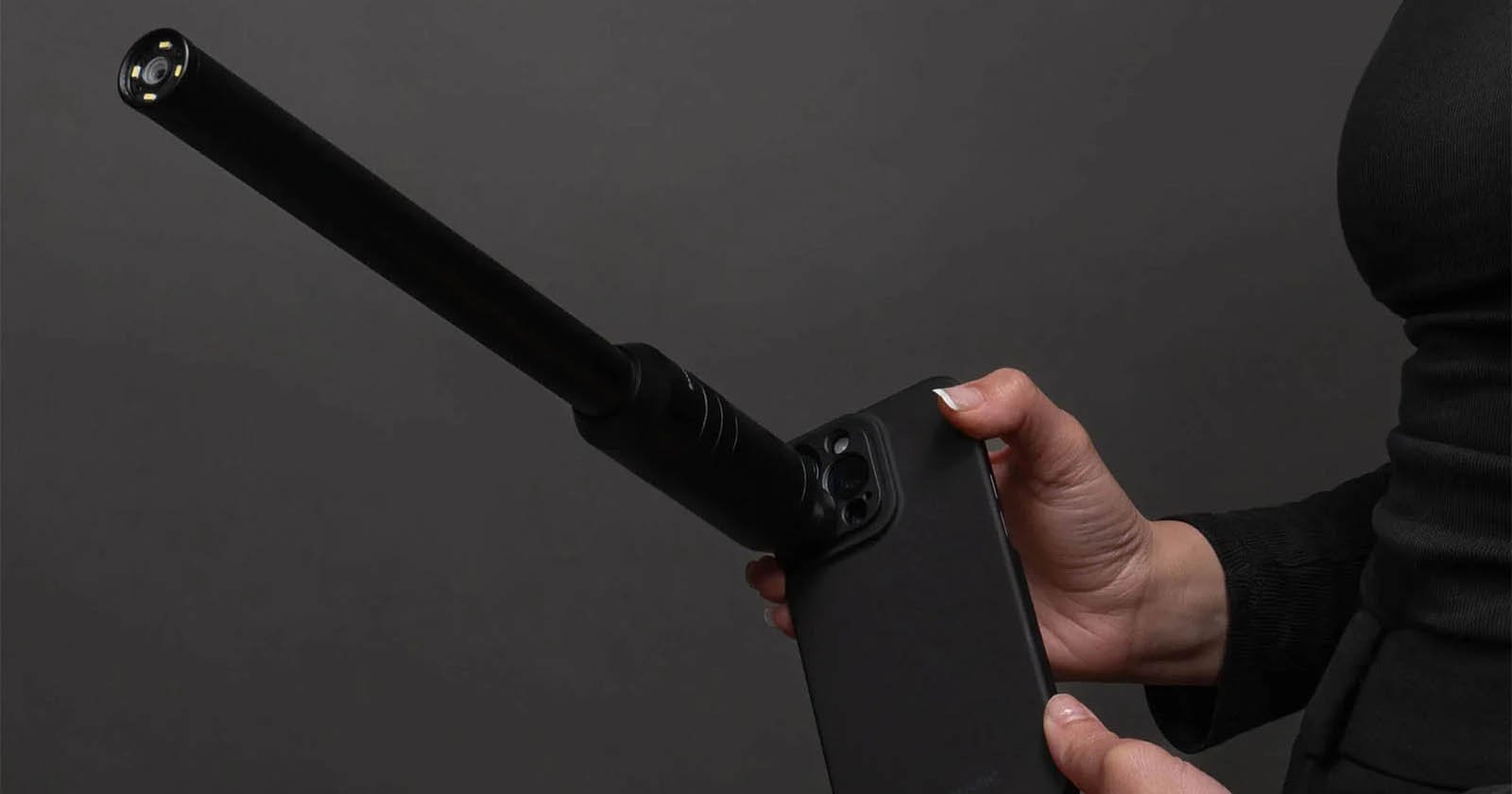
[ad_1]
![]()
Sandmarc is no stranger to interesting iPhone photography accessories, and the company’s newest product is perhaps its most unusual yet, a macro probe lens for iPhone.
Joining a recent 6x telephoto lens and 40x magnification microscope for iPhone, the Sandmarc iPhone Probe Lens works with a wide range of iPhone models, like the iPhone 15, 15 Pro, and 15 Pro Max, among many others. The Sandmarc Probe Lens is a 12-inch lens that promises to bring mobile photography into uncharted waters, allowing photographers and videographers to easily capture photos and videos in hard-to-reach places.

Like a macro probe lens for mirrorless cameras, the Sandmarc probe optic for iPhone promises a relatively wide depth of field for a macro lens thanks to its wide-angle focal length. This allows users to capture close-up shots with more environmental context than they could achieve with a more traditional 50mm, 100mm, or even 200mm macro lens.
The Sandmarc Probe Lens has a 16mm equivalent focal length and can achieve 2.1x macro performance. Sandmarc says focus is easily achieved via an adjustment wheel and that the lens features multi-element glass. The probe lens also has a built-in light at the end that charges via USB-C.
![]()
The probe lens is 346 millimeters (13.6 inches) long and weighs 258 grams (9.1 ounces). Like Sandmarc’s other iPhone lenses, it requires the company’s specialized iPhone case, which is available for iPhone 11, 12, 13, 14, and 15-series models.
![]()
“A pro-filmmaking tool for iPhone. The Sandmarc Probe Lens captures close-up and unique perspectives, transforming your footage into an immersive experience. What used to be only accessible for DSLR and mirrorless filmmakers is now possible with the camera in your pocket,” says Sandmarc.
![]()
The Sandmarc Probe Lens is available to preorder now for $335 with shipping expected to start in July. This price doesn’t include the required case, which is available for a wide range of iPhone models starting at about $20.
Sandmarc notes that mobile shooters should use the iPhone’s main camera for the best possible results. A camera slider is suggested for stability. Further, Macro Control must be enabled, which is explained in the video above.
Image credits: Sandmarc
[ad_2]